Casentino
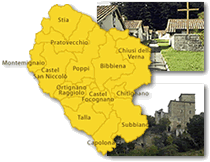
The region of the Upper Casentino, lying in part within the bounds of the Casentino Forests National Park, is dotted with castles and parish churches dating to the Middle Ages. Though oriented toward rediscovering this territory’s scientific and technical heritage, the proposed itinerary also touches localities in the valley of great historical-artistic attraction and interest.
The itinerary starts out from Poppi, which from Arezzo is reached (by) travelling 30 kilometres on SR71, then turning off at Bibbiena on SR70, where you encounter the most important castle of Casentino, location of a historical experiment on electricity and of a library that conserves several precious scientific texts.
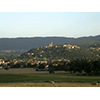
The Library is named for Count Fabrizio Rilli Orsini who, in 1825, donated to the Commune of Poppi his splendid library containing 9000 volumes and 200 manuscripts, along with the building in which it was housed and a modest income. Noteworthy among the manuscripts is an anonymous herbarium from the 17th century, composed of 323 samples, almost exclusively medicinal plants, classified on the basis of the 1684 edition of the Herbario nuovo by Castore Durante.
Enriched by important purchases and donations, such as the Soldani library and documents coming from suppressed monasteries, among them Camaldoli, in 1911 the Rilliana was moved to the medieval Castle of the Guidi Counts, a place of significance for science not only for the documents found in the historic section of the library (nautical charts, scientific texts, etc.), but also for a series of experiments with electricity. In 1786, at the order of Grand Duke Leopold of Lorraine, a conductor of electricity, one of the first lightening rods, was placed on top of the castle’s tower as an experiment. It was built with a double termination, a ball and a point, to test which of the theories on the correct shape for a lightening rod was correct, that of Franklin or that of Wilson. The observations, verified by competent officials, were noted with interest by Felice Fontana and Giovanni Fabbroni. In realty, the conclusions reached by Coulomb were already known; he had settled the dispute, with an ingenious physical demonstration, in favour of the point-shaped termination.
(Anna Toscano)
Just 8 km away on SP70, a second castle that can be visited only by appointment houses a small but interesting collection of objects tied to the territory’s crafts traditions.
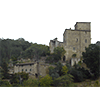
Though the first news that explicitly cites the Castle of San Niccolò dates only to 1253, it is very likely that the hill with today’s remains of the ancient thirteenth-century castle was the location of a fortified site much earlier. The castrum, as of the 11th century property of the Guidi Counts, became property of the Republic of Florence in 1349. Since then one of the main castles of Casentino and for its fortified position, it was chosen as the Podesteria (office held by the Podestà, the head of civic government in medieval Italy) of the Florentine Mountain. Renovated as of the 1970s by its owner Giovanni Biondi, the complex conserves part of the outer circle of walls, the original entry gate, and one of the powerful towers that marked its perimeter. A large portion of the thirteenth-century keep also survives and develops around a small porticoed courtyard. The rooms here, which once housed the prison and the court-house of the Florentine Podesteria, today exhibit a collection of equipment tied to the farming world, in addition to objects of everyday use such as ceramics of the medieval and Renaissance ages, interesting tools for spinning and antique furnishings. The portico of the keep is also the location of the clockwork that was originally on the tower at the entrance to town and is equipped with two circular quadrants in masonry with Roman numerals (6 figures), datable between 1806 and 1807, and today activated by an electronic device. The old mechanism created by Ferdinando Bagnoli in substitution of the previous, Flemish-made clock of 1570, instead dates to 1863.
(Elena Fani)
Backtracking towards Borgo alla Collina, turn left and continue for several kilometres on SR70 up to the junction for Stia. Then take SP74 and after about 5 km you reach the town, where you can visit the Museo dell’Arte della Lana [Museum of the Wool Trade], situated in a historical nineteenth-century factory.
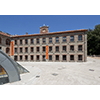
The Museum of the Wool Trade (Museo dell’Arte della Lana) was officially inaugurated on October 2, 2010 in Stia at the wool mill’s piazza and main building which were completely renovated after several decades of being abandoned. This new museum space was made available and financed by the Luigi and Simonetta Lombard Foundation which is the owner of the entire landmark grounds. All work was directed and designed by the Comes srl architectural and engineering firm.
Present in Casentino since the 14th century, textile manufacture consolidated as of the first half of the 19th century with the passage from handmade to industrial production. The town of Stia is indeed the location of a large factory, restructured in 1838 near the Staggia stream, which combined the production process consisting of spinning, weaving, fulling and carding. The first hydraulic-powered machines, produced in England and also present in the factories of Prato and Pisa, were installed in 1844.
Becoming property of Adamo Ricci, the Wool Mill presented its products at the Industrial Exhibition of Arezzo in 1882. In 1888, the complex was outfitted with new hydraulic and steam-powered equipment. The elegant shapes of the Wool Mill, still visible today, date to the works that transformed its structure between 1898 and 1909. A tall brick chimney stands isolated in the courtyard.
The presence of the Wool Mill in this area of Casentino led to the construction of new living quarters for workers, which in the second half of the 19th century were outfitted with several services such as an elementary school, a music school and a Society of Mutual Aid (founded between 1837 and 1838). At the end of the 19th century, the factory was supplied with electric lighting, which shortly thereafter was extended to the entire town. With its more than 500 employees and a production of more than 700,000 metres of fabric per year, the factory represented the community’s principal economic source in these years. Following a prolonged period of difficulties, activity ceased in 1979. In the following years the documents, fabric samples, historical photographs and models of articles of clothing were conserved in the Luigi Lombard Museum, since 1996 hosted in the original headquarters of the factory.
The main building of the wool mill with its original clock that kept track of the working shifts at the mill mounted on its façade now hosts the museum’s abundant exhibition space. The museum takes you from the early history of weaving up to modern techniques of textile making, obviously concentrating on the production of the Casentino wool fabric.
There is a hands-on area where the visitor can touch and feel both the traditional raw materials used for textiles such as wool, silk, cotton, linen and hemp, as well as the final various types of fabric. The details of the complex production process is described in both English and Italian on the educational panels located through out the museum. The most important part of the exhibition is dedicated to the centuries-old history of the wool trade and the Casentino area. This display area has many accurately restored historic machinery. One of the more interesting ones, for example, is called Ratinatrice [friezing machine]. This machine was introduced to the wool trade industry at the end of the 19th century and was used to “frieze” the wool which creates the characteristic curl or nap of the Casentino wool fabric.
The society which encompassed the wool industry in Stia for decades is brought back to life thanks to the section dedicated to the original documents, sample fabric patterns, attendance records and incident logs. The importance of the wool produced in Stia is revealed through these precious papers. For example, in the early 1900s, Stia held the primary role in Italy of providing the military coats made especially for the Scuola Ufficiali della Nunziatella.
At the end of the visit, the museum also has a large area dedicated to educational workshops where it is possible to participate in a series of activities allowing one to better understand the differences of textile fibers, as well as the main, basic steps necessary to transform the raw wool into a thread and eventually into a woven cloth.
(Elena Fani)
Nearby, on Via Vittorio Veneto, the zoology enthusiast can admire the interesting ornithological collection today housed in the Palagio Fiorentino.
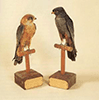
Founded in 1990, the Museum originated from the collection of the Casentine lawyer and notary Carlo Beni, an amateur naturalist and historian, author of a well-known Guida del Casentino (guide to the Casentino) published in 1881. The collection includes no less than 173 different species of birds, all linked to the Casentine territory, represented by over 500 specimens. It was formed in the second half of the 19th century, with contributions from local hunters and bird-catchers. Thanks to Beni's contacts with Enrico Hillyer Giglioli, founder of the Italian Ornithological Collection at the "Specola" Museum in Florence, his collection was based on sound scientific premises. At present, the collection is housed in the Palagio Fiorentino.
(Stefania Mangia)
On the way back, travelling SP310, we advise you turn off for Camaldoli, location of an ancient monastery and its pharmacy, which are 20 km away, taking first SP69 and then SP67.
The pharmacy, situated within the Camaldoli Monastery, dates from 1513, the year in which it was rebuilt after a devastating fire in 1504. However, its year of foundation appears to be much earlier than its date of reconstruction. The first document concerning the Hospital and the annexed Pharmacy of Camaldoli, both destroyed in 1276 and rebuilt for the first time in 1331, dates in fact from May 1048. The pharmacy flourished during the course of 17th and 18th centuries, but in 1866, subsequent to the law suppressing the monasteries promulgated by the Italian government, its activity ceased. Another consequence of the law was the dismembering of the Monastery's library. The precious manuscripts, among them several Greek and Latin codexes and numerous scrolls, were transferred to the Biblioteca Medicea Laurenziana in Florence and the Library of Arezzo, while the printed books were consigned to the Rilliana Library in Poppi.
The pharmacy, which conserves intact its furnishings and some of its pharmaceutical equipment, is divided into two sections: the sales area and the Galenic laboratory. The wooden entrance door to the sales area is decorated with symmetric plaques with inlaid chalices and doves, symbols of the Camaldoli community. The wooden shelves in the sales area date from the time of the pharmacy's foundation. On the chest of drawers, near the ceiling, are ovals portraying Cosmos and Damian, the patron saints of pharmacists. The pharmaceutical equipment is more recent, although a substantial number of glass and ceramic instruments and a good collection of copper tableware are found in the laboratory. In 1867 the more precious glass objects were loaned to the Museo Statale d'Arte Medievale e Moderna in Arezzo, where they are still displayed today.
The pharmacy has now begun again to produce some of its specialties, for the most part aromatic substances and liqueurs.
(Graziano Magrini)
****************************
Texts by Elena Fani
English translation by Victor Beard
Last update 05/feb/2008



 = libraries and archives
= libraries and archives  = scientific research centers
= scientific research centers  = memorial places of scientists
= memorial places of scientists = public health places
= public health places = places of science and worship
= places of science and worship = places of technology
= places of technology  = museums and collections
= museums and collections  = villas and gardens of science
= villas and gardens of science



